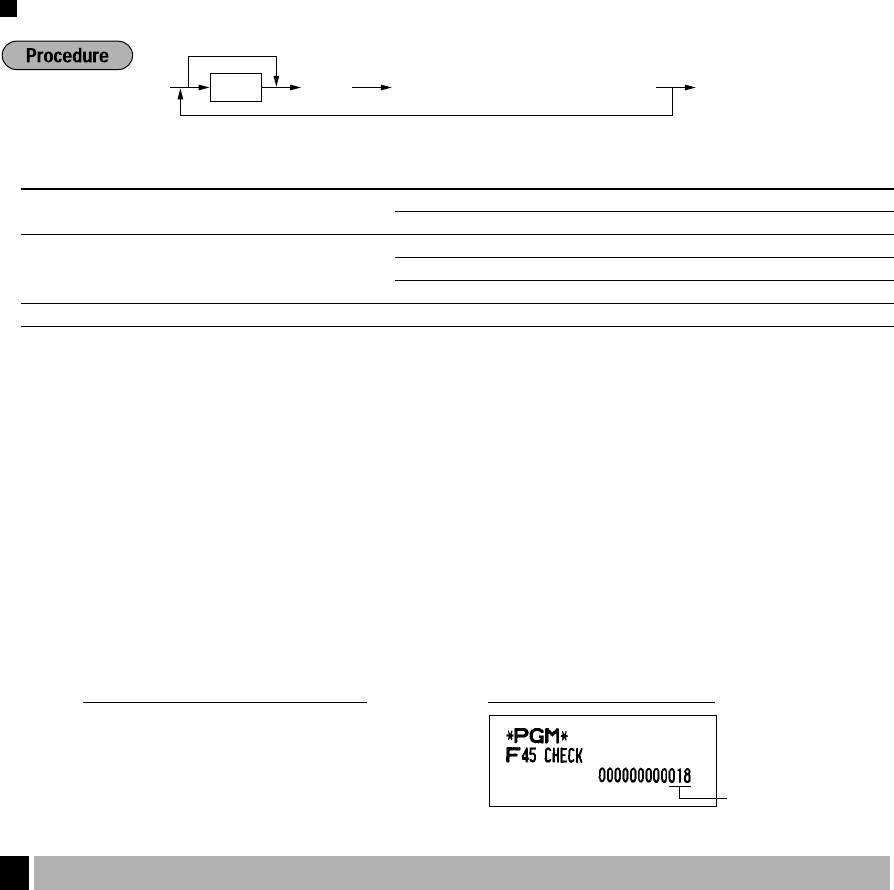Instruction manual
Table Of Contents
- WARNING
- CAUTION
- --- English version ---
- INTRODUCTION
- IMPORTANT
- PRECAUTION
- CONTENTS
- PARTS AND THEIR FUNCTIONS
- GETTING STARTED
- OVERVIEW OF FLOW OF DAILY SALES ENTRIES
- BASIC SALES ENTRY
- OPTIONAL FEATURES
- CORRECTION
- PRIOR TO PROGRAMMING
- BASIC FUNCTION PROGRAMMING (For Quick Start)
- AUXILIARY FUNCTION PROGRAMMING
- ADVANCED PROGRAMMING
- TRAINING MODE
- READING (X) AND RESETTING (Z) OF SALES TOTALS
- OVERRIDE ENTRIES
- CORRECTION AFTER FINALIZING A TRANSACTION (Void mode)
- OPERATOR MAINTENANCE
- 1 In case of Power Failure
- 2 In Case of Printer Error
- 3 Cautions in Handling the Printer and Recording Paper
- 4 Replacing the Paper Roll
- 5 Removing a Paper Jam
- 6 Cleaning the Print Head
- 7 Removing the Till and the Drawer
- 8 Opening the Drawer by Hand
- 9 Mounting the Spill-proof Cover
- 10 Before Calling for Service
- SPECIFICATIONS
- --- La versión española ---
- INTRODUCCION
- IMPORTANTE
- PRECAUCION
- INDICE
- PARTES Y SUS FUNCIONES
- PARA EMPEZAR
- REGISTRO BASICO DE VENTAS
- CARACTERISTICAS OPCIONALES
- CORRECCION
- PROGRAMACION DE LAS FUNCIONES BASICAS (Para el inicio rápido)
- PROGRAMACION DE FUNCIONES AUXILIARES
- 1 Programación de secciones
- 2 Programación de PLU (codificación de precios) y subsección
- 3 Programación de la tasa de comisión
- 4 Programación de teclas misceláneas
- Tasa para [%1], [%2] y [CONV]
- Importe para [(-)]
- Límite de tasa porcentual para [%1] y [%2]
- Parámetros de función para [%1], [%2] y [(-)]
- Parámetros de función para [CONV]
- Límite de dígitos de entrada para [RA], [RCPT/PO] y [TAX]
- Parámetros de función para [CHK], [CH1], [CH2] y [CA/AT/NS] (cuando se usa como tecla CA)
- 5 Programación de texto
- PROGRAMACION AVANZADA
- 1 Programación de número de caja registradora y de número consecutivo
- 2 Programación 1 de selección de diversas funciones
- 3 Programación 2 de selección de diversas funciones
- Modo de ahorro de energía
- Formato de impresión del mensaje del membrete
- Bloqueo de importe alto (HALO) para metálico en el cajón (CID) (centinela)
- Interfaz RS-232C
- Densidad de la impresora térmica
- Selección del idioma
- Especificación de dependientes de instrucción para el modo de instrucción
- Programación de la tecla AUTO — Tecla de secuencia automática
- 4 Lectura de programas almacenados
- MODO DE INSTRUCCION
- LECTURA (X) Y REPOSICION (Z) DE LOS TOTALES DE VENTAS
- REGISTROS DE ANULACION
- CORRECCION DESPUES DE FINALIZAR UNA TRANSACCION (Modo de cancelación)
- MANTENIMIENTO PARA EL OPERADOR
- 1 En caso de corte de la alimentación
- 2 En el caso de error de impresora
- 3 Precauciones al manejar la impresora
- 4 Reemplazo del rollo de papel
- 5 Extracción del papel atascado
- 6 Limpieza del cabezal de impresión
- 7 Extracción del separador de dinero y del cajón
- 8 Abertura manual del cajón
- 9 Colocación de la cubierta impermeable
- 10 Antes de solicitar el servicio de un técnico

39
Function parameters for
C
,
X
,
Y
and
A
(when using as CA key)
*1:Item: Selection: Entry:
A Footer printing Allow 1
Disallow 0
B Amount tendered entry Compulsory 1
Non-compulsory (for the CA or CHK keys) 0
Inhibit (for the CH1 or CH2 key) 0
C Entry digit limit 0-8
Footer printing
• This programming decides whether or not the machine should print a message at the foot of a receipt when a
specified media key is used. With regard to programming method of footer logo message, refer to “Logo
messages” section on page 44.
Amount tendered compulsory
• You may select amount tendered, compulsory or optional, for the
A
and
C
keys.
• You may select amount tendered, compulsory or inhibited, for the
X
and
Y
key.
Entry digit limit
• For the
X
,
Y
and
C
keys, program upper limit entry amount for the tendered amount. For the
A
key,
program upper limit entry for total cash amount which can be handled on the register. The entry digit limit is
in effect for REG-mode operation but can be overridden in the MGR mode. The entry digit limit is represented
by the number of allowable digits for the maximum entry or total amount. When “0” is set, the operation of the
corresponding key is prohibited.
The register allows you to program text for clerk names, department item names, PLU/subdepartment item
names, if necessary. There are two ways for programming text: using character keys on the keyboard or
entering character codes with numeric keys on the keyboard.
Using character keys on the keyboard
You can enter characters according to the small figures printed in the lower right position of the tops. For the
layout, please refer to “Keyboard” section on page 5.
The following are used as control keys for character entry:
H
Toggles between upper-case and lower-case letters. By default, the upper-case letter is selected.
Once the
H
key is pressed, you are locked in for entering lower-case letters. “a” is displayed when
lower-case letters entry is selected as shown in the operator display example on the following page.
N
Press the
N
key to enter numeric characters. For example to enter “1”, press the
N
and
1
key. If you press the
1
key without pressing the
N
key, the cash register goes to character codes
entry mode. Once the
N
key is pressed, you are locked in for entering numeric characters. “1” is
displayed when numeric characters entry is selected as shown in the operator display example on the
following page.
Text Programming
5
ABC (A:0, B:1, C:8)
018
@
CA
PrintKey operation example
*
1
ABC or
A
To program “0” for all items
To program for another key
*
2
:Press s key for CA key setting.
@s, C, X
*
2
Y










